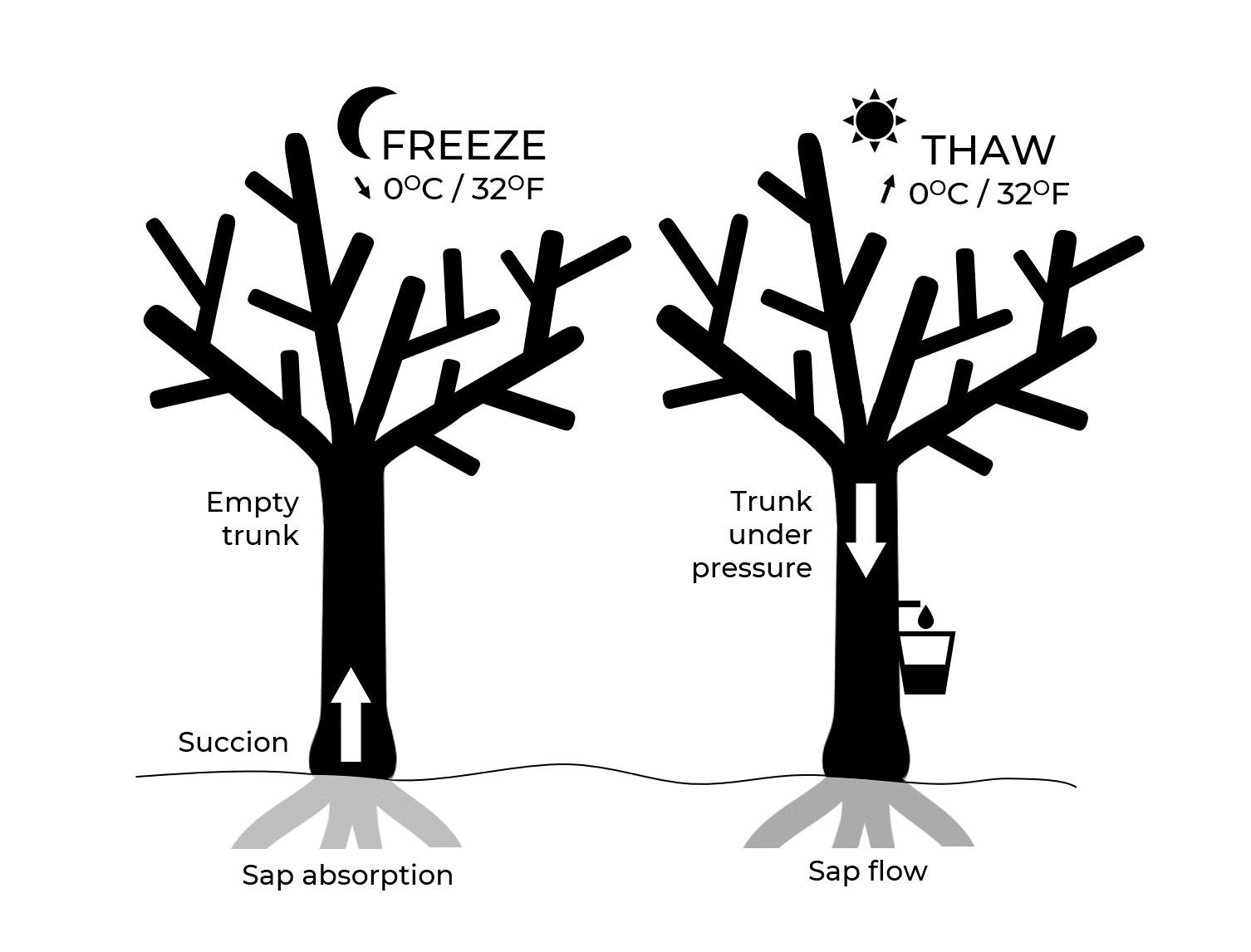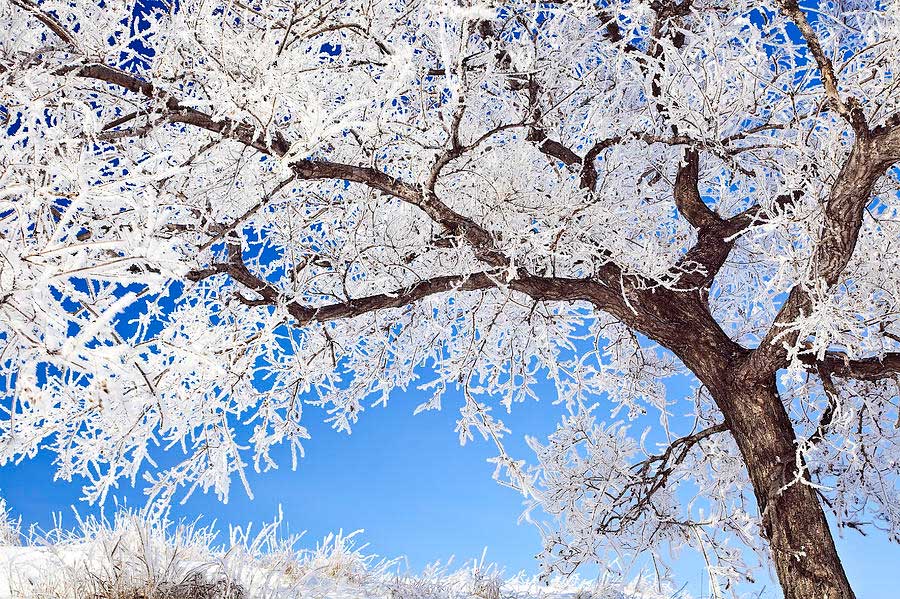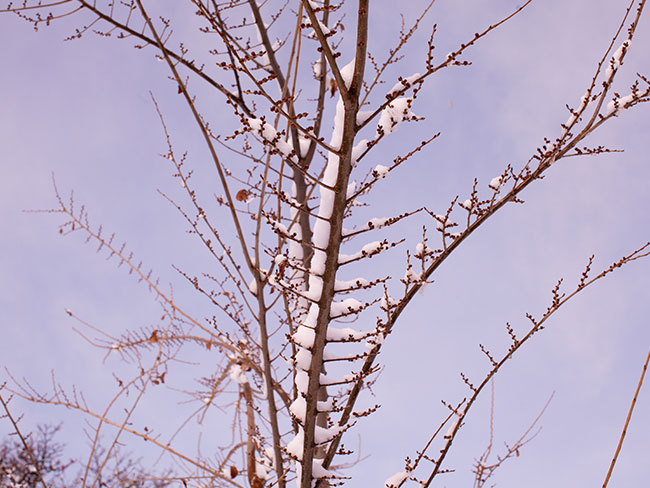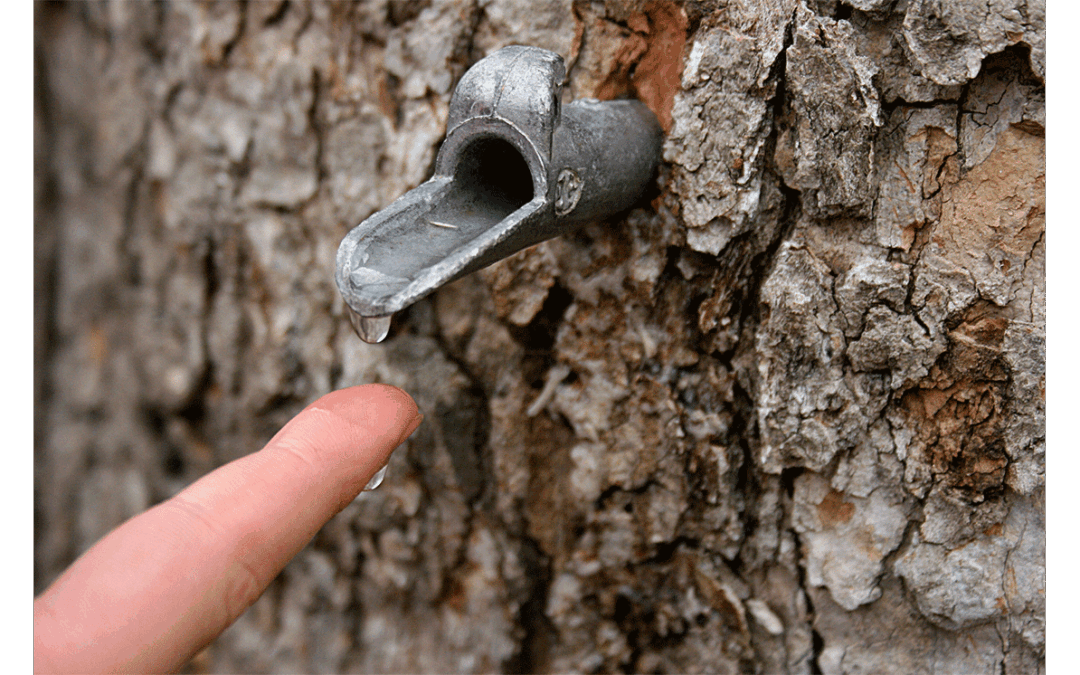Believe it or not, Maple trees sap is running in Denver even after our cold snap in January. The same thing happens in Vermont when Sugar Maples are sugared to make syrup. Sap running gets its start during the previous growing season. During photosynthesis, little openings on leaves called stomata are open, allowing water to escape by transpiration. Water is pulled up from the ground through a tree’s xylem to fill the void left by transpiration. Trees store sugars as starch in branches, trunks, and roots for later use. In the last two weeks in Denver, Maples released an enzyme called amylase that turns the starches into sugar which causes the sap to run.

Maple trees can run sap in cold weather because their ray cells are filled with gas, not water. As the temperature drops below freezing, their gas-filled ray cells condense and form sugar-containing crystals on their cell walls. During the day, as the tree thaws, the gas-filled cells expand, forcing the cell wall sugars into the vascular system, which pushes the sugar-laden sap around and out of the tree. Trees have several ways to eliminate this pressure — it evaporates or runs out of cracks, holes, or weak points in the tree bark. The sap-running freeze/thaw cycle stops when spring weather comes and stays. Despite sap loss, Maples have plenty of stored energy for leaf growth in the spring.
How Maples Beat the Cold

It is remarkable how Maples have adapted to cold climes. These trees can withstand temperatures way below zero. Their first line of defense in beating the cold is their bark. Maple bark consists of two distinct groups of cells. The inner bark or secondary phloem is the food-conducting tissue that adds girth to trees. As maples add a growth ring, the old phloem is pushed to the outside with their waxy substances hardening and becoming the outer bark. However, tree bark provides limited protection from cold temperatures. So the protection from freezing must come from within. Since trees are 60 percent water, how do they avoid internal ice damage? The answer is the unusual characteristics of pure water at low temperatures and the transformation of cellular liquids into antifreeze.
Maple trees work hard to keep their internal water clean because pure water can reach -36.6 degrees Fahrenheit before freezing. But pure water is not the only trick up Maples’ sleeves. In August, maples produce abscisic acid, which stops the flow of water and nutrients to leaves and seals the leaf from the stem. The leaves turn color in the fall and drop off. The hormone also increases the permeability of cell membranes. When temperatures drop, the trees’ living cells release water into the empty spaces between cells. When a hard freeze hits, ice crystals form in these intercellular spaces pulling water from the cells’ cytoplasm. As the water leaves, it increases the concentration of dissolved solids in cells lowering the cellular liquids’ freezing point. Also, trees release hormones in the winter that make cell walls more elastic. Intercellular ice crystals indent but do not puncture the inner, flexible plasma membrane. Amazingly maple trees can withstand temperatures as low as 45 below zero. After that, ice forms inside the cells, eventually killing the trees.

Despite the cold weather lately in Denver, many other tree species are also active. Most branches and trigs are full of leaf and flower buds. The Patriot Elm above, featured in the Two Elms on Elm Street blog, is off to the races even when covered with snow. To keep Maples and other hardwood trees happy and their sap flowing, it is a good idea to deep-root water them in the late winter.
Ross Tree introduced a new tree health offering called the Tri-Level Tree Fertilization Program. We believe deep root feeding should be three times a year versus two because Denver’s growing season is getting longer. Watering during the cold months helps trees weather winter droughts and support early bud growth. Please call Ross Tree at 303-871-9121 or fill out a service request form to set up a watering appointment.

